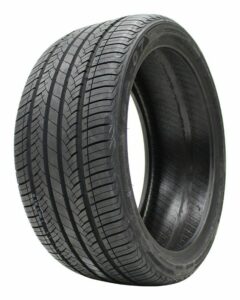
Albert, What Are The Car Leasing Mistakes That Can Cost?
Leasing a car is similar to renting an apartment; you are not the owner but must maintain it. When you lease a car, you will be given partial ownership. Whereby your driving miles and months are controlled until you become the owner.
Related Topics (Sponsored Ads):
Just as the cost of renting an apartment is lower than the cost of buying the house. The cost of leasing a car always appears to be cheaper than when you decide to purchase a car. This is backed by a report from Experian’s State of the Automotive Finance Market. According to this report, drivers save about a hundred thirteen dollars on their monthly lease payments.

Irrespective of how much you can save by leasing a car, most people make costly mistakes in the process. This article will enlighten you on how car leasing works, the pros and cons, and also the mistakes you should avoid.
What Is A Car Lease?
A Car lease is primarily a way of borrowing a car rather than buying a brand new or used car. Generally, the standard number of years for this contract ranges from three to four years. To retain the car you will be required to pay a certain amount of money per month.
“How much am I meant to pay?” This is one question that does not have a standard answer because it depends on the dealer’s term. However, in order to calculate your monthly payments, most dealers follow a specific pattern.
This pattern involves analyzing the value of the new car in comparison to its residual value. The residual value of a car is primarily the cost or value the car would attain after the expiration of your lease. If the dealer notices that the value of the car you leased would depreciate over time, you will be made to cover this depreciation.
For instance, if the cost of the new car you leased is $35,000, and the dealer estimates that it would cost $18,000 in three years. You will be charged $333 per month to cover the depreciation.
In addition to this, you will be required to pay finance charges just like every purchase made with a loan. Hence, how low your interest rates would depend on your credit score. To cover other related costs, such as taxes you would be required to pay some money. However, the amount of money you pay before you drive off may influence the rate of your monthly payments.
Mistakes To Avoid When Leasing A Car
Although the leasing of cars can be cheap, they can also increase drastically if you make costly mistakes. Hence, it is always advisable to have an eye on these mistakes to save money.
– High upfront payments
– Not buying gap insurance
– Underestimating the mileage of the car
– Not maintaining the car
– Leasing the car for too long
High upfront payments
If there is one thing most car dealers are guilty of, it is advertising affordable rates to trap customers. Meanwhile, you will be required to pay thousands of dollars to reach the affordable rate they advertised.
Once the car is damaged or stolen before your lease expires, your insurance company would pay for it. They will do this by reimbursing the car dealer. Meanwhile, you would not be refunded the thousand dollars you paid upfront. At the end of the day, you would be left with neither a car nor your upfront payment.
It is however recommended to pay nothing more than $2000 upfront. You can also choose to add all payments to your monthly fees. So that the dealer would not have the entirety of your money when something goes wrong before your lease expires.
Not buying gap insurance
Having gap insurance is essential for people driving leased cars. The term “gap” simply refers to the difference between what you owe and the value of the car.
For instance, if your dealers guaranteed that you will be able to buy the leased car at the end of your lease. Let’s assume the price tag on the car is $14,000. Once you have paid the cost of the car before the expiration of your lease, your gap insurance will come to play.
Your insurance company will pay the amount to the dealership. Meanwhile, they will do this after determining the current market cost of the car.
Underestimating the mileage of the car
Generally, the standard mileage limit offered by most dealerships is usually 10,000, 12,000, and 15,000 miles. If you violate the given mileage limit, you will be charged at the end of your lease.
Therefore, you should know your driving habits before leasing a car to avoid extra charges m
Not maintaining the car
Since you are not yet the owner of the car but only borrowed it, you are required to maintain it. Refusal to appropriately maintain the car could call for extra charges at the end of your lease.
If the damage made in the car is excessive, you would be charged more. That is the full market price needed for its repair.
Leasing the car for too long
This has to do with the keeping of the leased car for more than the specific warranty period. The warranty period is usually 36, 000 miles or three years. If you keep the car beyond the warranty period, you would be responsible for the maintenance and repairing of the car. At the same time, you would be paying the monthly fees.
To avoid this mistake you should make sure your lease period is shorter or matches with the warranty period.
Related Topics (Sponsored Ads):
Discover More






